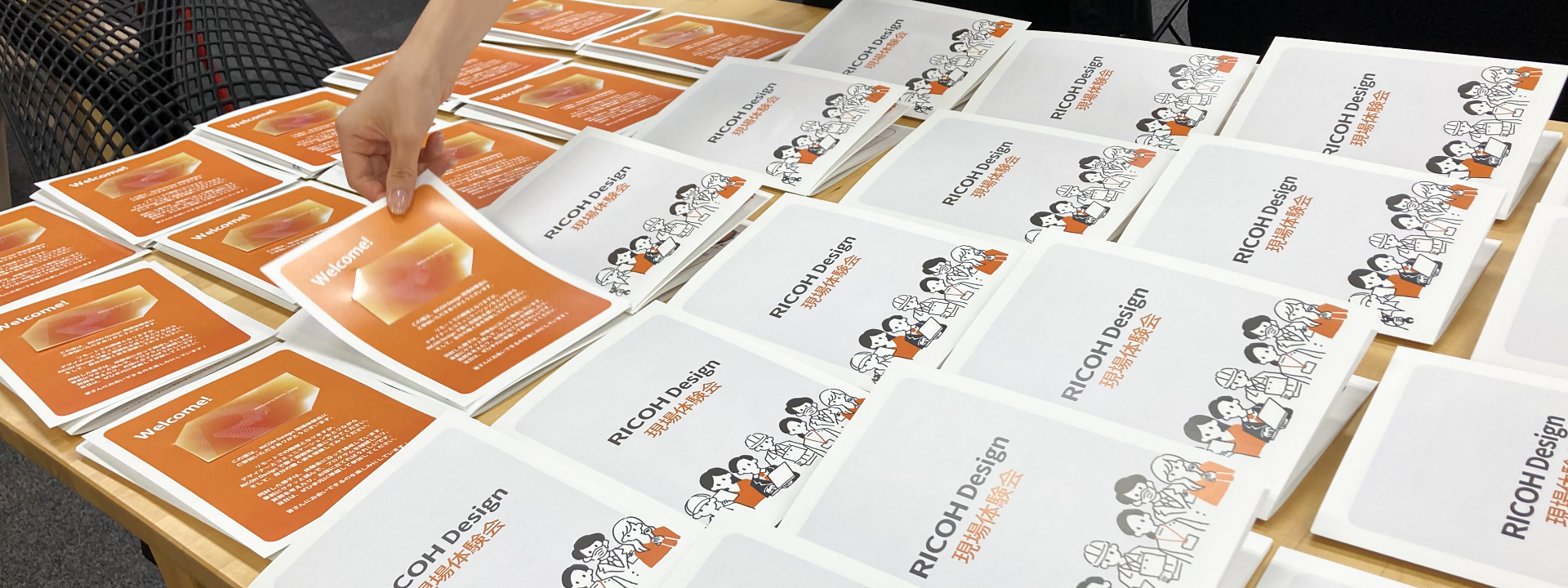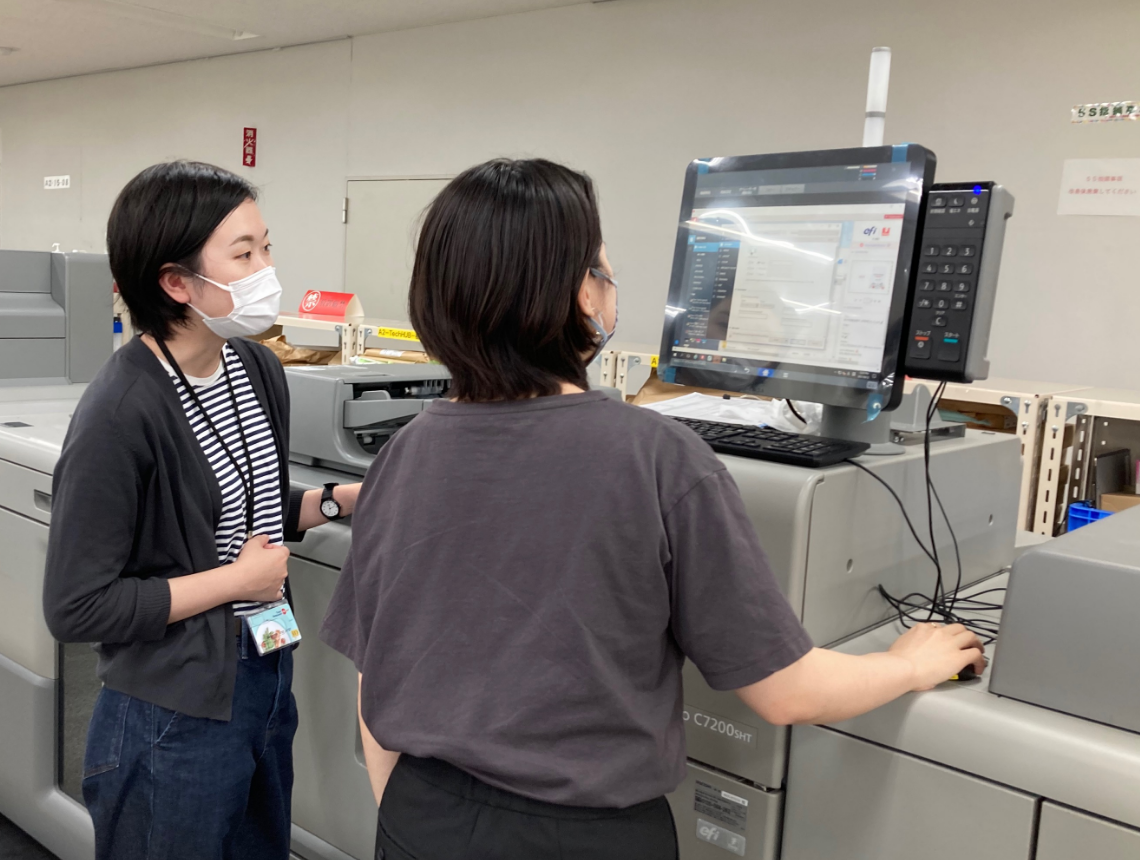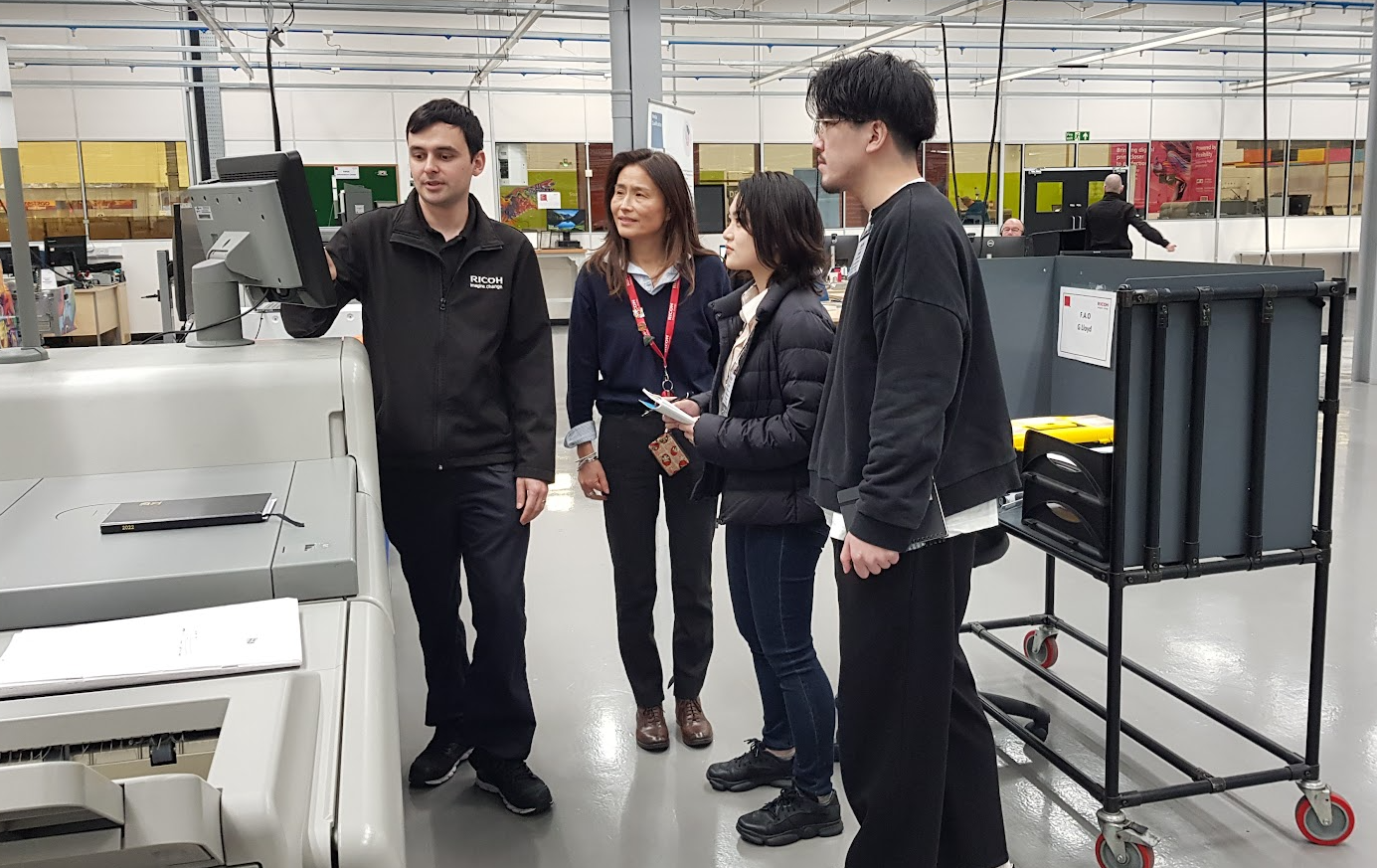
2023/02/28


Takato Komatsuzaki: What kind of work do you do on a daily basis, Kanako?
Kanako Hirasawa: I design user interfaces for large-scale commercial printers called production printers that are used in printing plants and other such places.
TK: How do printers for home use and commercial printers differ?
KH: Firstly, the size and price of the printers are on a different scale. Large commercial printers can measure more than 10 meters, and they are really expensive. They also differ in the fact that they print commercial materials, such as booklets and advertising mail. Given that they need to be able to print at high speed and deliver high quality, they are packed with functions for efficient and precise printing.
TK: I see, so you work on large printers whose price is well beyond the means of an individual.

TK: What do you find difficult about working on commercial printers?
KH: Trying to build up specialist knowledge while working, I think. Especially in the work in my first two years here, I tried to build up my knowledge of commercial printing and learn about the process on sites where commercial printers are actually used.
TK: Does your work include opportunities for learning?
KH: Designers who work on commercial equipment often have opportunities to go and speak to customers. If you don’t know the situation on the ground then you won’t understand the difficulties faced by customers, and going to see the situation from the customer’s perspective and talking to them leads to learning.

KH: And commercial printers are available to use at work, so I was able to get experience of the printing process. I got experience of everything from creating data for the material to be printed to pre-printing adjustments, printing, cutting and folding, and packaging at the end.
TK: So it’s very important to get an experience of everything for yourself.
KH: That’s right. By gaining an experience of this series of processes rather than just possessing fragmented knowledge, I realized that aspects such as connectivity to processes before and after printing were also very important. The fact that I was able to experience the way the customer moves throughout the processes and the areas that cause stress led to it being a learning experience.
TK: Are there any characteristics that make the UI of commercial printers particularly unique?
KH: The UI of a commercial printer is not all about screens in the way that a web application is, and you have to take into account the connection with the machine itself. For example, when an error occurs, its location is displayed on the screen. In order to check this, the person doing the work moves a few meters from the screen to where the problem is. So in this situation, they have to understand what kind of error has occurred and where it is on the machine, and resolve the problem accurately. It is therefore necessary to design the screen in order to guide the customer.
TK: So it really is important to see the situation on the ground.

KH: Ricoh commercial printers are used overseas as well as in Japan. We go to visit actual overseas sites where they are used in order to get an understanding of the demand.
TK: What stood out to you after seeing these overseas sites?
KH: I think that people tend to think commercial printers are used in large plants where you can secure a good amount of space for them. However, on this trip, I had the chance to look around a small plant. There were printers in rooms with standard flooring, and places where there was barely room for movement between the printers. In one place, there was a fan placed on top of the machine to keep the paper dry and cool.
TK: The unforeseen situations you described have changed my impression of the way commercial printers are used. You couldn’t have got this experience anywhere else but on the ground. What else did you learn?
KH: I saw that differences in culture mean that customers are busy in different periods and print different content, and was also able to see the kind of impact that the climate and other aspects of the environment have on printing work. I saw situations such as really tall people with completely different physiques to me with their hands inside the machine working on intricate parts of it during maintenance, and I was able to see that there are differences in the nuance of the terminology used on the UI screens. So I was able to learn by observing work on site in this way.
TK: Are commercial printers able to perform special printing that home use printers can’t?
KH: In contrast to home use printers, commercial printers can use special colors and can print on different media types such as synthetic paper and transparent films. The configuration and maintenance for special printing require complex work.
TK: I would guess that arranging the complex screens for this requires a great deal of patience.
KH: The more complex a screen is, the more the UI needs to be well arranged and easy to use. For example, if it is awkward to make adjustments for printing on really thick paper, this will have an effect on the customer’s work. So if you have easy-to-use screens and functions then you can keep taking orders for special printing, and this leads to a broader range of business opportunities for customers. We have to make it known what kind of printing the printers we make are capable of, and customers must be able to replicate this. And so that’s why I think easy-to-use screens are important.
TK: So the UI can impact the range of work that a customer can handle.
KH: That’s right. I think that adding value through the use of special colors instead of just providing standard printing services changes the information and experience that people gain after receiving printed material. I think that this is where the essence of the value of commercial printers lies.
High-functionality commercial printers require intricate configuration and adjustment, so there are many, many aspects that need to be considered in order to improve the arrangement and ease-of-use of screens. When you successfully put these things together like the pieces of a puzzle, you get a real sense of accomplishment. And when customers on site see the screens you’ve made improvements to on the basis of an idea of how you want them to be used, and they tell you that they are easy to use, it makes you feel happy and that your work was worthwhile as your aims match the customer’s aims and you have fulfilled their needs.